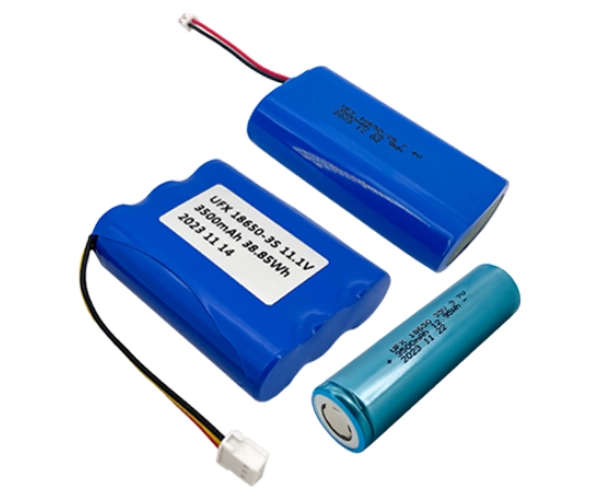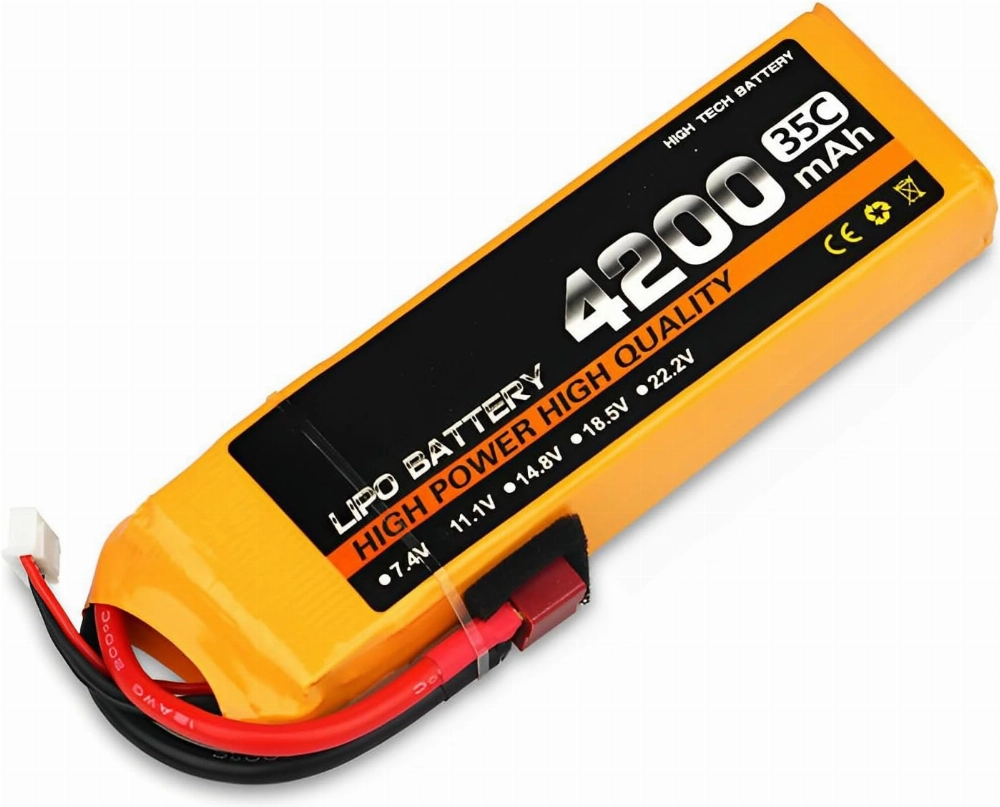When it comes to powering your remote control boat, selecting the right battery is crucial for achieving optimal performance and longevity. The choice of battery directly impacts the speed, runtime, and overall experience of your RC boat. In this comprehensive guide from KHZH, we will explore the key factors to consider when choosing an RC boat battery, providing valuable insights to help you make an informed decision.
Section 1: What is an RC Boat Battery?

An RC boat battery is a rechargeable power source specifically designed for remote control boats. These batteries provide the necessary electrical energy to drive the motor, control movement, and power additional onboard features. Unlike traditional disposable batteries, RC boat batteries are designed to withstand the demands of high-performance RC boats, offering extended runtimes and reliability.
Section 2: How to Choose the Right Lithium Battery for Your RC Boat
Lithium batteries have gained immense popularity in the RC boat world due to their impressive performance and energy density. Here are the key factors to consider when selecting a lithium battery for your RC boat:
1. Capacity (mAh)
Battery capacity, measured in milliampere-hours (mAh), indicates the amount of electrical charge the battery can hold. Higher capacity generally translates to longer runtimes. Consider the power requirements of your RC boat and choose a battery with a capacity that matches your desired runtime.
2. Voltage (V)
The battery’s voltage rating determines its power output and compatibility with your RC boat’s motor. Always ensure that the battery voltage matches the specifications provided by the boat’s manufacturer. Using an incompatible voltage can result in reduced performance or damage to electrical components.
3. Discharge Rate (C Rating)
The discharge rate, or C rating, indicates the battery’s ability to deliver a sustained current. A higher C rating signifies that the battery can release energy more quickly, making it ideal for high-performance RC boats. Choosing a battery with an appropriate C rating ensures consistent performance and power output.
4. Size and Weight
Ensure that the battery’s size and weight fit comfortably within your RC boat’s battery compartment without compromising balance or stability. Good balance enhances the boat’s maneuverability and reduces the risk of capsizing during high-speed runs.
5. Charging and Safety Considerations
Opt for batteries that are compatible with reliable chargers that include safety features like overcharge and over-discharge protection. These features help extend battery life and reduce the risk of accidents or damage due to improper charging.
Section 3: Types of RC Boat Batteries
Several types of RC boat batteries are available, each with its unique advantages and considerations. Let’s explore the most popular options:
1. Nickel-Metal Hydride (NiMH) Batteries
Nickel-Metal Hydride (NiMH) batteries are an affordable and easy-to-use option for RC boats. They offer a decent capacity, are relatively safe to use, and do not suffer from the memory effect (memory effect). However, they tend to be heavier and have a lower energy density compared to other battery types.
2. Lithium Polymer (LiPo) Batteries
LiPo batteries are known for their high energy density, lightweight design, and ability to deliver bursts of power. A favorite among RC boat enthusiasts, they offer excellent performance and extended runtimes. However, LiPo batteries require careful handling, storage, and charging to ensure safety and longevity. To optimize charging efficiency, you may want to check out the best charging amps for LiPo batteries.
3. Nickel-Cadmium (NiCd) Batteries
While once popular, NiCd batteries have gradually been replaced by newer technologies. They offer decent performance and durability but are prone to the memory effect, which reduces their overall capacity. Additionally, NiCd batteries are not environmentally friendly due to the toxic nature of cadmium and require proper disposal.
4. Lead-Acid Batteries
Lead-acid batteries are commonly used in larger or industrial RC boats that require substantial power. While they offer reliable performance, they are heavy and less suitable for high-speed RC boats due to their weight and lower energy density.
Choosing the right battery is essential to unlocking the full potential of your RC boat. By considering factors such as capacity, voltage, C rating, size, and safety features, you can make an informed decision that enhances your RC boat experience. Rely on KHZH for choosing the right battery and let your RC boat perform at its best.
RC Boat Battery Guide
Part 1: Introduction to RC Boat Batteries
Choosing the right battery for your RC boat is crucial to maximizing performance and ensuring a longer-lasting and more enjoyable experience on the water. Understanding battery types, characteristics, and maintenance is essential for optimal RC boat performance.
Part 2: Key Factors in Choosing the Right Battery
When choosing an RC boat battery, keep these factors in mind:
- Capacity (mAh or Ah): Capacity indicates the amount of energy the battery can store. Higher capacity means longer run times, but may also increase the battery’s weight.
- Voltage (V): Voltage determines the speed and power of your RC boat. Higher voltage generally means more power and faster performance.
- Discharge Rate (C-Rating): The discharge rate indicates how quickly the battery can release its stored energy. For high-speed RC boats, you need a battery with a high discharge rate to ensure optimal performance.
- Size and Weight: The size and weight of the battery are crucial for ensuring your boat’s balance and efficient setup. An overly heavy battery can slow down the boat or affect handling.
- Safety Features: It is essential to choose batteries with built-in safety features to prevent issues like overcharging, overheating, or short circuits.
Part 3: Types of RC Boat Batteries
RC boat batteries come in various types, each with its own advantages and disadvantages.
1. NiMH (Nickel-Metal Hydride) Batteries
Advantages:
- Cost-effective
- Less susceptible to the memory effect, reducing the need for complete discharge before charging
- Easy to use and maintain
Disadvantages: - Heavier compared to other types
- Lower energy density, meaning shorter run times for the same weight
2. LiPo (Lithium Polymer) Batteries
Advantages:
- High energy density and lightweight
- Offer excellent power and extended run times
Disadvantages: - Require careful handling and specific charging protocols
- More expensive and sensitive to overcharging, overheating, or physical damage
3. NiCd (Nickel-Cadmium) Batteries
Advantages:
- Good overall performance
- Durable and reliable
Disadvantages: - Susceptible to the memory effect, requiring full discharge before charging
- Environmental concerns due to cadmium content
4. Lead-Acid Batteries
Advantages:
- Affordable and readily available
- Stable power output
Disadvantages: - Heavy with low energy density
- Requires regular maintenance and has a shorter lifespan
Battery Comparison Table
| Battery Type | Advantages | Disadvantages |
|---|---|---|
| NiMH | Cost-effective, no memory effect | Heavier, lower energy density |
| LiPo | High energy density, lightweight | Requires special care, safety precautions |
| NiCd | Good performance, durable | Memory effect, environmental concerns |
| Lead-Acid | Affordable, stable power output | Heavyweight, lower energy density, requires maintenance |
Part 4: How to Protect Your RC Boat Battery
Proper care and maintenance significantly extend your RC boat battery’s lifespan. Here are some helpful tips:
Storage
- Store batteries in a cool, dry place, away from high temperatures or humidity.
Charging
- Always use a charger suitable for the battery type and follow the manufacturer’s instructions to avoid overcharging or undercharging.
Discharging
- Avoid fully discharging. Use a voltage alarm or monitor voltage to prevent the battery from dropping below its safe level.
Handling
- Avoid dropping or mishandling the battery to prevent physical damage, which can impact performance or create hazards.
Balancing
- For LiPo batteries, balancing the cells during charging ensures optimal performance and extends battery life.
Cleaning
- Regularly inspect and clean battery terminals and connectors to remove dirt, corrosion, or loose connections.
Safety Precautions
- Always follow the manufacturer’s safety guidelines.
- Use protective gear like gloves and goggles when handling batteries.
- Never puncture or disassemble batteries to prevent leaks or fire hazards.
Part 5: Conclusion
Choosing the right battery for your RC boat is a crucial decision that affects performance and longevity. By considering factors like capacity, voltage, discharge rate, and safety features, you can make an informed decision that suits your needs. Additionally, proper care and maintenance ensure optimal battery performance, allowing you to enjoy your RC boat to its fullest.








